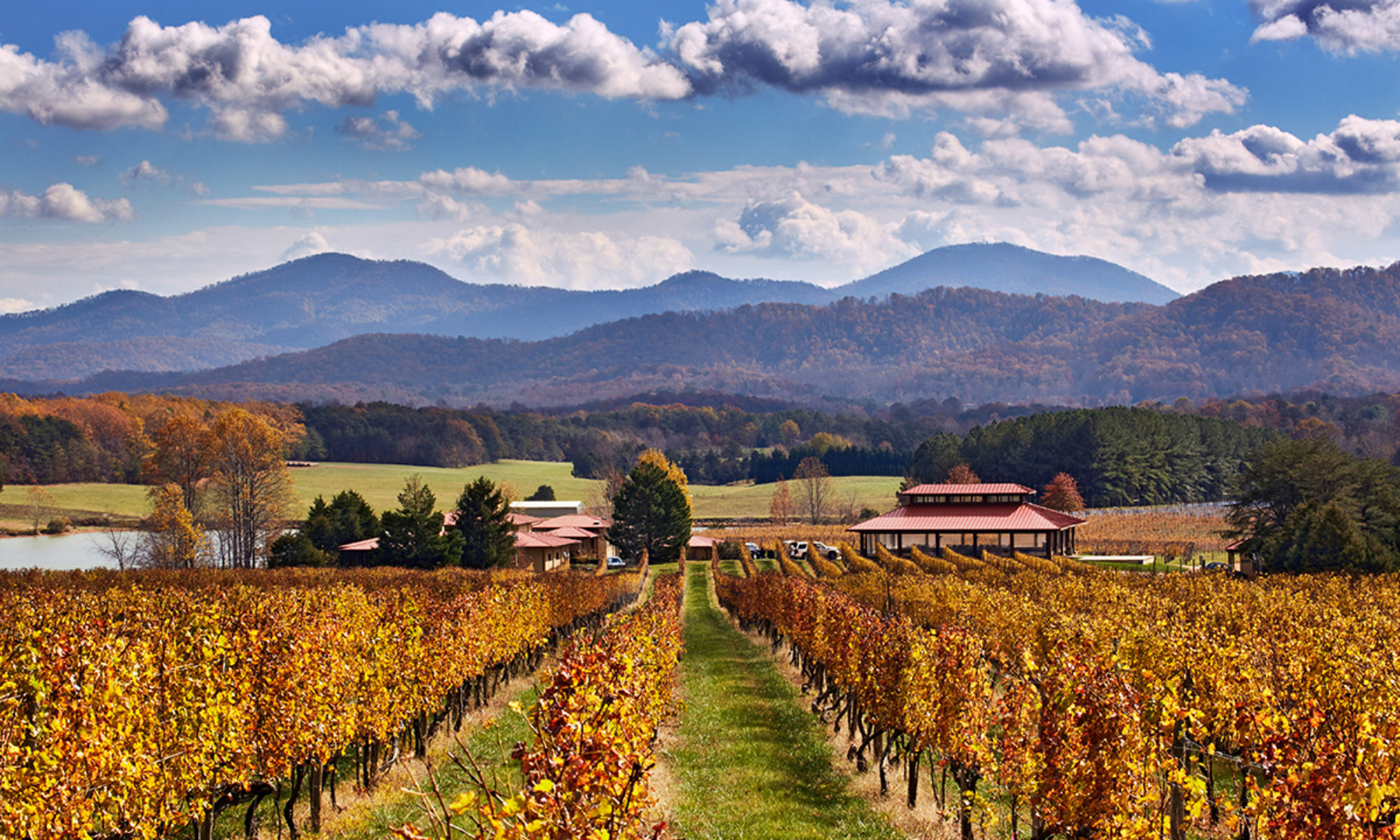This Albemarle vineyard, one of the oldest in the area, produces wines from 32 acres of grapes near Barboursville, some 30 minutes northeast of Charlottesville. C.J. Reeder and his family initially planted Chardonnay and Cabernet Sauvignon in 1977 and began selling fruit in 1980. In 1984 the Reeders opened the winery and began producing wine under their own label. Burnley is now one of the state’s oldest wineries.
Wine. Tier III. Selections range from Chardonnay to Norton, Cabernet Sauvignon and Chambourcin, and an excellent Riesling. A number of blends, with Dog Gone Red getting the best-name award. All wines are estate-grown. Burnley produces about 5000 cases annually.
Setting. The small winery building is old but in good repair, with an upper floor tasting room with views over the vineyards and mountains. Low tasting fee for the variety available. A guesthouse, Fernando’s Hideaway, offers overnight accommodations.
Stories. Natural Virginia: the Rivanna River. The Rivanna is Virginia’s first governmentally-designated Scenic River. A derivation of the “River Anna,” named for the then-Queen of England, the Rivanna rises in the foothills and mountains west of Charlottesville, reaching the Eastern border of Shenandoah National Park, and empties into the James River some 50 miles away. The North Fork is formed by the Lynch and Roach rivers in Greene County, and the South Fork by the confluence of the Mechums and Moormans rivers in Albemarle County. The Rivanna has been an important artery since well before the arrival of European settlers in Virginia. The Monacan tribe held the territory in the early 17th century, and there were many Monacan sites along the Rivanna. The principal town of the tribe, Rassaweck, was at the confluence of the Rivanna and the James. A Native American burial mound is located near where the North Fork and South Fork come together, and was documented by Thomas Jefferson in his 1781 “Notes on the State of Virginia.” By the mid-18th century the Jefferson family owned much of the land along the Rivanna: Thomas Jefferson’s father, Peter Jefferson, built a small watermill on the river which he called Shadwell. This was overlooked by the hill which came to be called Monticello. The Rivanna was an important transportation route during the Revolution, with a military depot and arsenal which were captured and destroyed by British troops. Significant improvements for transportation were made after Independence, some by the Jeffersons, which made the river navigable along its length. The Rivanna served a large community of farmsteads and plantations, and increasingly manufacturing facilities. The latter included what became the Charlottesville Woolen Mills, and Union Mills, which featured a 2.5-mile canal and towpath with locks on the river. Leisure has increasingly replaced commerce as the main activity along the Rivanna. In the late 20th century the river saw the establishment of the Rivanna Trail, which encircles the city of Charlottesville. The trail’s 20 miles take hikers all the way around Charlottesville, passing through many of the city’s parks and the wooded lands surrounding it. The river has also become increasingly popular for its rafting and wildlife watching, with Great Blue and Green Herons, Belted Kingfishers, Ospreys and Bald Eagles along its course.
